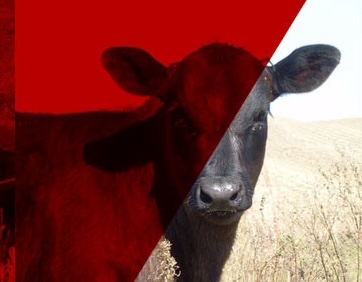Wildfires can leave producers wondering how to manage burned pastures, but the good news is that perennial grasses are resilient and will recover.
How Wildfires Affect Grasslands
- Dormant Season Fires (Winter/Early Spring): If a wildfire occurs when grasses are dormant (like in late February), the grass buds that sprout in spring should be unharmed.
- Growing Season Fires (May–August): If a wildfire burns during the growing season, grasses suffer more damage because they are actively growing.
- Drought Conditions: If pastures experienced drought last year and dry conditions continue this spring and summer, recovery will be harder. May and June rainfall is critical for regrowth and should guide range management decisions. More conservative measures may need to be taken if wildfire is coupled with drought.
- Increase in Annual Weeds: Following a fire, an increase in annual weeds is common. This is normal and temporary.
Grazing Strategies After a Wildfire
“Recommendations for grazing after a wildfire used to be a lot more conservative,” says Jerry Volesky, Nebraska Extension Range Specialist. Recent research suggests that grazing restrictions do not need to be as strict as previously thought. However, these key strategies should be followed:
- Protect the Soil
- Fire increases the risk of wind and water erosion.
- Residual (standing dead plants) and litter (dead plants covering the soil surface) are removed in a fire, which increases the amount of bare ground following a wildfire or prescribed burn.
- The goal is to build up biomass in the pasture to protect the soil from wind/water erosion.
- Recent research in the eastern Nebraska Sandhills (Barta Brothers Ranch) evaluating dormant season prescribed fire (not the same as wildfire, but similar response) has not seen differences in grass growth in the summer following a fire. According to Mitchell Stephenson, Nebraska Extension Range Specialist, the big difference is the amount of carry over plant material (standing dead and litter) which increases the amount of bare ground following a wildfire or prescribed burn.
- Delay Grazing & Reduce Stocking Rates
- Wait as long as possible before grazing to allow residual plant material to rebuild and protect the soil.
- In a normal precipitation year, delay turnout by 1–2 months.
- Reduce stocking rates by 20–40% in normal years and even more during drought conditions.
- The longer you wait to graze, the less you need to reduce stocking rates. If you wait until September or later, you can graze at full stocking rates since plant residual/litter has been established to cover bare soil.
- Monitor Rainfall in May & June
- Good early-season precipitation helps grasses recover quickly, often making burn areas hard to spot by mid-summer.
- Continued drought will reduce grass production, requiring more conservative grazing practices.
If your pasture is dominated by cool-season grasses (like smooth brome), a quick grazing in early spring, sometimes called a “flash grazing” can help knock down smooth brome and promote growth of warm-season grasses.
Next year in 2026, pastures should return to normal grazing rates, pending drought conditions.
Assistance Programs
Emergency or disaster programs for wildfire recovery may be available through your local NRCS or FSA office. Contact them to express interest and check for available support.
Article by Bethany Johnston, Nebraska Extension, Livestock Systems Educator; Jerry Volesky, Nebraska Extension, Range & Forage Specialist; and Mitch Stephenson, Nebraska Extension, Range Management Specialist.

